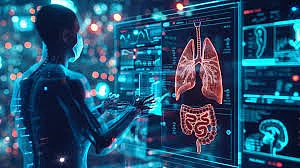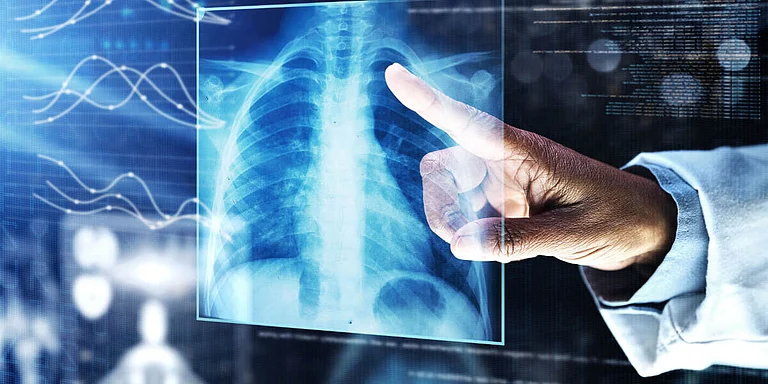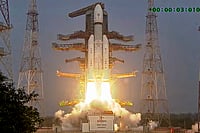Researchers at the University of Southampton have developed an artificial intelligence (AI) tool that can identify hard-to-detect objects lodged in patients’ airways more effectively than experienced radiologists.
In a study titled “Automated Detection of Radiolucent Foreign Body Aspiration on Chest CT Using Deep Learning”, published in npj Digital Medicine, the AI model outperformed radiologists in analysing CT scans for radiolucent foreign bodies—objects that are difficult to visualise on standard imaging.
These accidentally inhaled objects can cause coughing, choking, and breathing difficulties, and if left untreated, may lead to serious complications. The findings highlight the potential of AI to assist clinicians in diagnosing complex and potentially life-threatening conditions.
The study was led by Dr. Yihua Wang, Dr. Zehor Belkhatir, and Prof. Rob Ewing at the University of Southampton, in collaboration with researchers from Wuhan, China.
“These objects can be extremely subtle and easy to miss, even for experienced clinicians,” said Zhe Chen, PhD researcher and co-first author of the study. “Our AI model acts like a second set of eyes, helping radiologists detect these hidden cases earlier and more reliably.”
Foreign body aspiration (FBA) occurs when an object—often food or a small material fragment—becomes lodged in the airways. When these objects, such as plant material or crayfish shells, are radiolucent (invisible on X-rays and faint even on CT scans), detection becomes particularly challenging. Up to 75 per cent of adult FBA cases involve radiolucent materials, often leading to missed or delayed diagnoses.
To address this challenge, the researchers created a deep learning model combining a high-precision airway mapping technique (MedpSeg) with a neural network that analyses CT images for subtle signs of foreign bodies.
The model was trained and tested using three independent patient groups—over 400 patients in total—in collaboration with hospitals in China. Its performance was compared with that of three expert radiologists, each with more than a decade of clinical experience, who reviewed 70 CT scans, including 14 confirmed FBA cases.
While the radiologists achieved 100 per cent precision when they identified a case (no false positives), they detected only 36 per cent of actual FBA cases. The AI model, in contrast, detected 71 per cent of cases, though with 77 per cent precision due to some false positives. In terms of the F1 score, which balances precision and recall, the AI achieved 74 per cent, outperforming radiologists’ 53 per cent.
“The results demonstrate the real-world potential of AI in medicine, particularly for conditions that are difficult to diagnose through standard imaging,” said Dr. Wang, the study’s lead author.
The researchers emphasised that the system is intended to assist, not replace, radiologists—providing an additional layer of confidence in complex or uncertain cases. The team now plans multi-centre studies with larger and more diverse populations to refine the model and minimise bias.
The research was supported by the UK Medical Research Council and the China Scholarship Council.


























